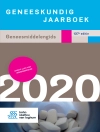Disease-relevant intracellular protein-protein interactions occurring at defined cellular sites possess great potential as drug targets. They permit highly specific pharmacological interference with defined cellular functions. Drugs targeting such interactions are likely to act with fewer side effects than conventional medication influencing whole cell functions.
This book discusses therapeutically relevant protein-protein interactions with a major focus on scaffolding proteins tethering signal transduction processes to defined cellular compartments by direct protein-protein interactions. Recent advances in the development of pharmacological agents interfering with protein-protein interactions are highlighted.
Tabla de materias
Organization of Scaffolds.- A-Kinase Anchoring Proteins as the Basis for c AMP Signaling.- Arrestins as Multi-Functional Signaling Adaptors.- Role of Ena/VASP Proteins in Homeostasis and Disease.- Scaffold/Matrix Attachment Regions (S/MARs): Relevance for Disease and Therapy.- Clathrin/AP-2-Dependent Endocytosis: A Novel Playground for the Pharmacological Toolbox?.- Scaffolding Proteins and Cellular Signalling.- PDE4 Associates with Different Scaffolding Proteins: Modulating Interactions as Treatment for Certain Diseases.- G-Protein-Coupled Receptor-Signaling Components in Membrane Raft and Caveolae Microdomains.- Protein Scaffolds, Lipid Domains and Substrate Recognition in Protein Kinase C Function: Implications for Rational Drug Design.- Compartmentalised MAPK Pathways.- Dynamic Protein Complexes Regulate NF-?B Signaling.- An Oncogenic Hub: ?-Catenin as a Molecular Target for Cancer Therapeutics.- A Toolkit for Real-Time Detection of c AMP: Insights into Compartmentalized Signaling.- Cell Type-Specific Anchoring.- Scaffolding Proteins in Cardiac Myocytes.- Molecular Architecture of Signal Complexes Regulating Immune Cell Function.- Scaffolding Proteins at the Postsynaptic Density: Shank as the Architectural Framework.- Interference with Protein-Protein Interaction Sites as a New Pharmacological Concept.- Domains Mediate Protein-Protein Interactions and Nucleate Protein Assemblies.- Proline-Rich Sequence Recognition Domains (PRD): Ligands, Function and Inhibition.- Chemical Inhibition Through Conformational Stabilization of Rho GTPase Effectors.- Pharmacological Interference with Protein-Protein Interactions Mediated by Coiled-Coil Motifs.- Direct AKAP-Mediated Protein-Protein Interactions as Potential Drug Targets.












